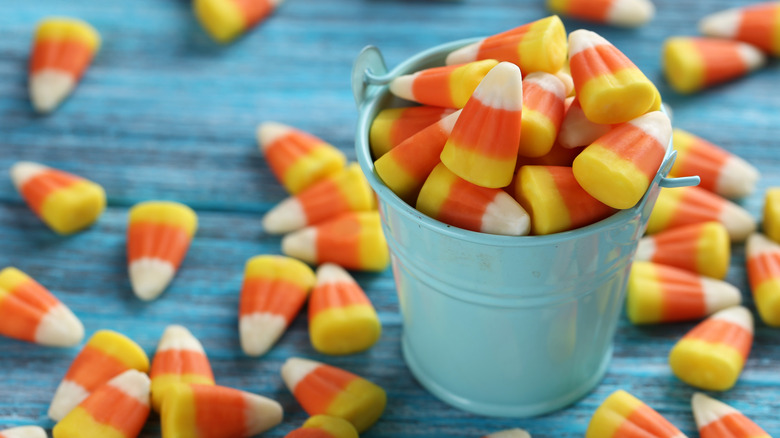There Is A Correct Way To Consume Candy Corn, According To New Survey
Despite all the controversy surrounding the treat, you probably can't think about Halloween without candy corn crossing your mind. According to USA Today, more than 35 million pounds of candy corn are produced each season, and per the National Confectioners Association, the Halloween treat is one of the most popular candies of the season, trailing only behind chocolate and gummy candy.
In 2021, food-flavor specialist Marie Wright told Today why the people who love the candy feel so serious about it: It's sweet with a waxy, crumbly texture that candy connoisseurs enjoy. On the flip side, some people absolutely hate candy corn, which Wright suggests might have something to do with a negative association in their childhood. "People have a real strong opinion. It's almost like, if you want to start a little bit of a heated discussion, you can ask somebody about candy corn," she said. "It seems to evoke a very strong response."
On top of the argument between love and hate, people are now disagreeing about how candy corn should be consumed.
Which end is the starting point?
The National Confectioners Association conducted a study to find out how the average person consumes candy corn. The survey revealed that 33% of folks begin from the narrow white end, while 16% of candy lovers begin with the wide yellow end. Of course, some people can't wait for the full experience, as 51% of people simply pop the whole piece in their mouth at once. Though if you ask a meme-creating hater, they'd say the best way to eat candy corn is by throwing it in the trash.
No matter if you love it or hate it, or eat it from one end or the other, you're likely to get your hands on it at some point this Halloween season. Of course, during this time of year, it's not at all unusual to find a plethora of leftover sweets sitting around various parts of homes and businesses. Interestingly, according to Farmer's Almanac, the reason for this ties back to the way many of our favorite Halloween treats were originally manufactured.
Because candy production was an extensive process in the '40s and '50s, the production season of many treats ran between May and November. Of course, as a result, most candy makers had a whole lot of ready-to-eat products right around the time of Halloween, thus creating an enduring trick-or-treating tradition.

